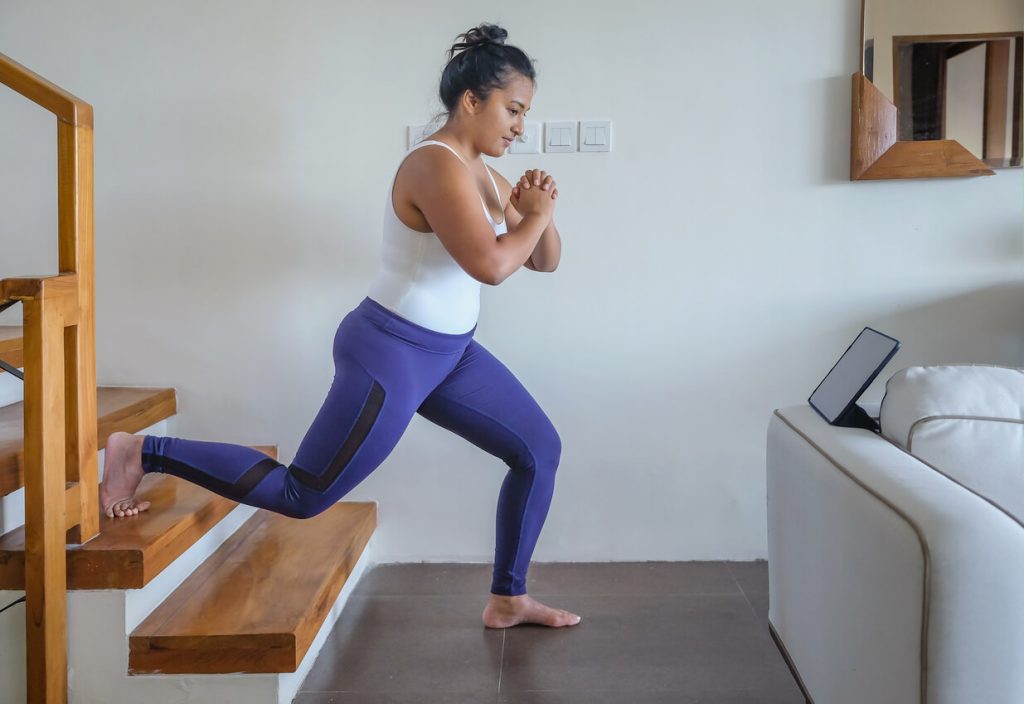As a beginner embarking on your fitness journey, you’re probably thinking about how to make a workout plan and wondering where to start.
For some, a personal trainer can offer the guidance needed to create a workout plan, but this may not be an option for everyone with rising living costs.
Fitness influencers might feel like the next big thing. With quick guides and video tips blowing up social media, it may feel like a great place to get all your information. However, it can be quite overwhelming and difficult to pin down the right routine.
Well, fear not. We’ve created a short guide to get you on the right track to help you achieve your fitness goals.
Think about yourself first

It can be easy to get swept up in social media fitness trends or follow someone else’s ‘come gym with me’ plan, but does this work for you?
Starting a fitness journey is all about helping to improve your life rather than being a burden.
Trying to keep up with a plan that doesn’t suit your lifestyle or includes overcomplicated routines isn’t going to be sustainable for long.
Sit down and take some time to think about what you enjoy most or if there’s anything you might like to try. For example, you may enjoy walking over running, which can be very effective when done at a pace. You might have seen a local gym class that you have to try, or you might prefer to be more social with something like a dance class.
All of these are different methods of exercising. It’s best to find something you feel you will enjoy, as you’re more likely to stick to it—and consistency is key!
Action point: Identify and list the exercise activities you enjoy the most and have easy access to.
Outline your fitness goals

Before you jump right into creating a full-blown fitness routine, it’s best to take a moment to outline what you would like to achieve.
Do you have a specific time-driven goal in mind, such as being able to run in a 5k race or something as simple as wanting to complete a hike with friends?
If your goals are time-driven, then work out how long you have to achieve them, and this will help you assess what is going to be achievable in the time you have.
On the flip side, you may be looking to generally improve your fitness and create a workout plan that will help you stay in a routine. If so, what goals within this do you want to set yourself? It may be being able to lift a certain number of weights or complete several classes—the possibilities are endless, but having something to work towards will help you stay on track.
Action point: Create a list of your exercise goals that you know are reasonable to achieve.
Be consistent

As we’ve mentioned, consistency and staying on track will be the best way to achieve your fitness goals.
When creating your workout plan, be realistic with yourself on the number of times you would like to complete your workout activities each week.
Consider your obstacles, such as work, looking after a family, space or other commitments.
Set your number of works to reflect what is achievable rather than trying to achieve a quantity that isn’t reasonable. This way, you can avoid disappointment before you begin and are less likely to fall off the wagon when sticking to your workout plan.
Understand that exercising is a slow burn, and results will not appear overnight. Your plan should be enjoyable to help you stick to it—rather than constantly counting down the number of workouts you have left in a week.
Action point: To begin creating your plan, create or grab a calendar. Mark out any events or plans you already have for the month ahead. Take time to identify how many times you are comfortable with working out each week. As a beginner, this may be anywhere between 2-3 times. Write in the dates you intend on exercising.
Keep it interesting

When you’re following a dedicated workout plan, this can get repetitive.
After following your plan for anywhere between two weeks and a month, you may get a little bored. This is dangerous territory, as boredom leads to not being consistent.
We suggested you identify a list of different exercise activities that you enjoy doing. As the time goes on, you may want to add to this list as you start building up your confidence in exercising.
Action point: Refer to your list of exercise activities you enjoy and ensure you have at least two or three different activities listed for your chosen workout days.
Rest and recover

Once you’ve decided on what exercises you will be doing and when it’s time to plan your recovery.
As a beginner, you may have set some big fitness goals, which means you’ll most likely be completing exercises you’ve never tried before.
To avoid injury, you need to ensure your muscles have sufficient time to rest and recover. You may also experience more muscle aches due to lactic acid build-up, but this will slowly get better the more you train.
Exercising is known to improve your sleeping habits, meaning you’re probably going to be a little more tired than usual. Having rest days can help you get back into the training mind frame and ready to embark on your next planned workout session.
Though these are rest days, they don’t necessarily mean sitting on the sofa recovering. You may want to partake in some lighter, more relaxing exercises during this time, for example:
- A light walk
- Swimming
- Yoga or pilates
- Stretching and foam rolling
Action point: Build some recovery days into your calendar workout plan. Decide whether you want them to be active recovery days—such as the list of relaxing exercises above—or whether you might partake in some meditation or self-pampering.
Track your progress

There would be no point in setting some fitness goals if you aren’t going to see if you’ve achieved them.
Tracking your progress along the way will help keep you motivated and consistent.
This will look different for every individual workout plan and should mirror the goals you’ve set in the beginning. For example, if you want to run 5k, note the distances you run during each session, or keep a checklist of the classes you’ve taken if you want to consistently attend a certain number.
Action point: Block off a small section of your calendar to track your progress. This will be a great way to look back and see how far you’ve come. Once you get to the end of your first month on your new workout plan, see where you are with achieving your goals—do you need to set some new ones? Do you need a bigger challenge? What more do you need to do to reach your goal?
Put your workout plan into action

Now you’ve got your plan ready, it’s time to put it into action.
It may feel a little daunting or overwhelming at first but remember this is a personal plan that you created. If it isn’t working, adjust it—there are no rules other than ensuring it works for you.
Don’t worry if you make mistakes. Though consistency is key if you decide to take a break, pick up the workouts again when you feel ready and continue following the plan—remember it’s always a work in progress.
Good luck!
Specialist sports insurance from Insure4Sport
As a beginner embarking on new exercises, you may be more at risk of injury or even injuring others.
At Insure4Sport, we have you covered with our specialist sports insurance. As you might be trying different new things, we cover a wide range of sports. Our policies include Public Liability, Personal Accident cover and Loss of Earnings cover, and optional extras. That way, you can tailor your cover to your specific needs.
Click to find out how we can help or hit the button below to get an instant online quote.




